This is sort of rough but may get you started. With these extensions and setup:
extensions [ nw ]
undirected-link-breed [ node-links node-link ]
breed [ nodes node ]
breed [ walkers walker ]
turtles-own [ path target-nodes ]
links-own [ weight ]
to setup
ca
set-default-shape nodes "circle"
set-default-shape walkers "arrow"
let vals ( range 11 -11 -5 )
foreach vals [ y ->
foreach reverse vals [ x ->
ask patch x y [
sprout-nodes 1 [
set color blue
set label who
set size 2
]
]
]
]
create-network
ask one-of nodes [
hatch-walkers 1 [
set color green
set pen-size 5
pd
set target-nodes nobody
set path []
]
ask n-of 3 other nodes [ set color red ]
]
reset-ticks
end
That creates a grid of nodes, as well as a single walker randomly placed on one of the nodes. Three of the nodes without a walker are red to act as 'target' nodes in the path. Then, your network procedure as in your question:
to create-network
ask links [die]
ask nodes [
set color blue
let neighbor-nodes other turtles in-radius 5
create-node-links-with neighbor-nodes [
set weight one-of [ 1 2 3 ]
set label weight
set color grey
set thickness 0.1
]
]
end
That gives you a randomly weighted network of links for the walker to follow.

Now, to build paths, get the walkers to recognize the red nodes as possible targets. Then, generate all possible path permutations, always starting at the node that the walker is on.
Permutations are generated using code modified from this answer
to-report path-permutations [ node-list ] ;Return all permutations of `lst`
let n length node-list
if (n = 0) [report node-list]
if (n = 1) [report (list node-list)]
if (n = 2) [report (list node-list reverse node-list)]
let result []
let idxs range n
foreach idxs [? ->
let xi item ? node-list
foreach (path-permutations remove-item ? node-list) [?? ->
set result lput (fput xi ??) result
]
]
report result
end
Edit: instead of fewest turtles en route, turtles now select the route with the smallest weighted distance.
Count the number of turtles of each possible path, and select the path with the smallest weighted distance over the entire route.
to set-path
if target-nodes = nobody [
; Designate any red nodes as targets
set target-nodes nodes with [ color = red ]
let start-node one-of nodes-here
; Get a list of nodes
let target-node-list sort target-nodes
; Build all possible paths
let possible-paths map [ i -> sentence start-node i ] path-permutations target-node-list
; Get the weighted distance turtles for each possible path
let path-turtles map [ i -> turtles-on-path i ] possible-paths
; Keep the path with the smallest overall weighted distance
let shortest-path reduce [
[ shortest next ] ->
ifelse-value ( weighted-dist-of-path shortest < weighted-dist-of-path next ) [ shortest ] [ next ] ] path-turtles
set path shortest-path
]
end
set-path uses these two reporters:
to-report turtles-on-path [ in-path ]
; A reporter that returns the path from the start node of a given path
; to the final node of that path.
let temp-path []
( foreach ( but-last in-path ) ( but-first in-path ) [
[ from to_ ] ->
ask from [
ifelse length temp-path = 0 [
set temp-path nw:turtles-on-weighted-path-to to_ weight
] [
set temp-path sentence temp-path but-first nw:turtles-on-weighted-path-to to_ weight
]
]
] )
report temp-path
end
to-report weighted-dist-of-path [ in-path ]
let weighted-dist 0
( foreach ( but-last in-path ) ( but-first in-path ) [
[ f t ] ->
ask f [
set weighted-dist weighted-dist + nw:weighted-distance-to t weight
]
] )
report weighted-dist
end
Once the turtle knows what path it should take, it can follow that path somehow- here is a simple example.
to follow-path
if length path > 0 [
let target first path
face target
ifelse distance target > 0.5 [
fd 0.5
] [
move-to target
ask target [
set color yellow
]
set path but-first path
]
]
end
All that is wrapped up in go like so:
to go
if not any? nodes with [ color = red ] [
stop
]
ask walkers [
set-path
follow-path
]
tick
end
To give behavior something like:

Edit:
The much-simpler option is to just have the walker check the nearest (by weight) target node, build the path, follow that path, then select the next nearest target once it reaches the end of that path (and so on). However, that may not give the overall shortest path- for example, look at the image below:

The green trace is the path taken by the path-permutations walker. The blue square indicates the starting node, the orange squares designate the target nodes. The orange trace is the one taken by the simpler walker (as described above). You can see that overall, the path taken by the simpler walker has a higher overall weight cost because it is only assessing the weighted path to the next target rather than the overall weighted cost of the entire path.



